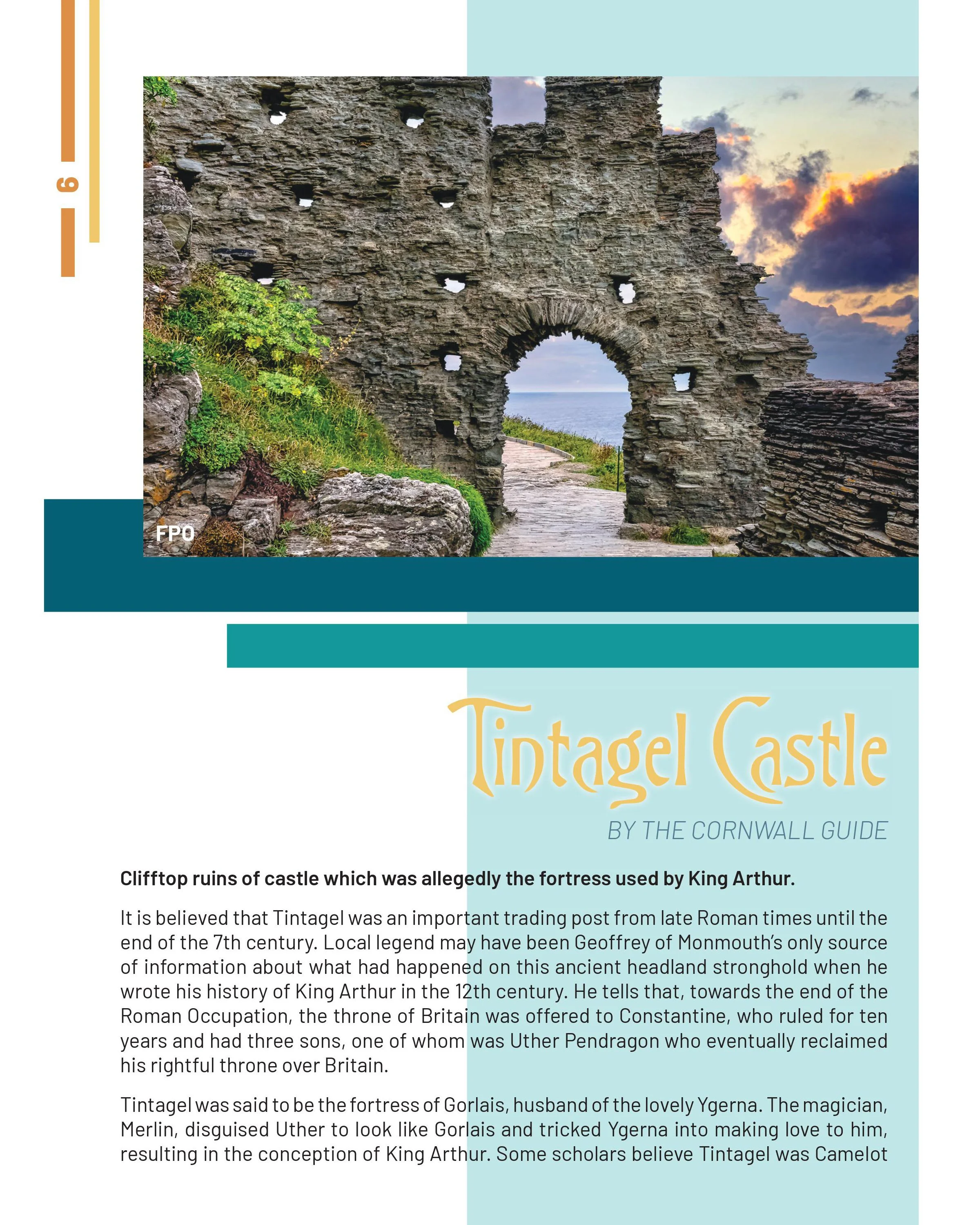Visit Cornwall
Prompt: Produce a marketing campaign encouraging tourism to Cornwall.
Disclaimer: This project was for educational purposes only, therefore all featured photography is for position only.
Creative Brief & Target Market Persona
Located at the southeastern tip of Great Britain, Cornwall’s culture formed from its connection to the sea. Cornish cities and towns dot the coastline, marking nearly every significant ocean intake with ports, harbors, and fishing docks. Sea trade and fishing were historically Cornwall’s largest legal income; however, the many smaller beaches and coves provided opportunities for smuggling and piracy. Today, much of Cornwall’s revenue comes from tourism: first, for its beaches, and second, for its intricate history as a Celtic nation.
Cornwall has retained much of its unique culture despite the lack of independent recognition that regions like Wales possess. The dreary weather Cornwall experiences throughout the years, except for a few summer months, kept the peninsula secluded from the greater part of England and its culture. This allowed the Cornish people to retain much of the language and traditions of their Celtic inheritance. The Industrial Revolution caused a great change to Cornish culture, namely making Methodism the standard religious practice. Even so, the Cornish have not forgotten all their Celtic rites, and major holiday festivals are still kept alive in the rural villages of Cornwall today.
As a travel destination, the region of Cornwall presents two major themes: the sea and the Celts. With its beaches, mossy stones, craggy cliffs, and rolling moor, I felt Cornwall would best be represented with an earthy color palette of blues, greens, and browns. A suitable title would be reminiscent of the ancient Celts yet also fitting for a relaxing beach scene, while a suitable body font would be open and easy to read. Rather than advertising Cornwall as the next hottest place to party, I aimed to represent it as a place of solace—a place to take a break from the craziness of life and spend time soaking in nature’s beauty and the rich history of long-past centuries embedded in the everyday.
Keeping in mind the rocky landscape of Cornwall and the necessity to hike to many of the best visitation spots, Elise Hoel (the persona crafted to better define my target demographic) is an able-bodied, historical fiction writer in her mid-thirties, currently residing in England. As a visual learner, she often seeks out the physical experience of visiting the region and interacting with the locals while in the research phase of her historical novels. Cornwall for Elise not only provides her with a wealth of historical information but also a solace away from the distractions and noise of the city to pursue her writings.
Print Adverts
Postcards
Aiming to highlight the different areas of interest in the region of Cornwall throughout my promotional series, this postcard targets persons interested in Cornwall’s rich surfing culture, highlighting a beach popular for beginner and intermediate surfers.
Intended as a printed media, the colors and contrast appear lighter on a digital display.
Posters
The next promotional material, a series of posters, highlights Cornwall’s historical religious sites, both Celtic and Christian. The first of the series is shown fully rendered for print. Below are the many potential layout sketches, roughly depicting various religious sites.
Rack Cards
The location of interest for this promotional rack card is St. Michael’s Mount, off the beach of Marazion, which can be reached on foot at low tide and by boat at high tide. Visit Cornwall, the official tourist board of Cornwall, would (hypothetically) sponsor the printing and distribution of these rack cards, hence their official logo placed on the back of the card.
Visitor’s Guide
As the final piece of this promotional series, this Visitor’s Guide booklet is intended to interest readers in taking a long weekend (3-4 day) trip to Cornwall, specifically the town of Tintagel and Bodmin Moor. The main attraction featured in the booklet is Tintagel Castle, an English Heritage site, followed by five smaller attractions: King Arthur’s Great Halls (a historical reconstruction), King Arther’s Hall (stone ruins), St. Nectan’s Glen, Rocky Valley, and Merlin’s cave.
Disclaimer: The articles in this guide were written and published by the Cornwall Guide.



























